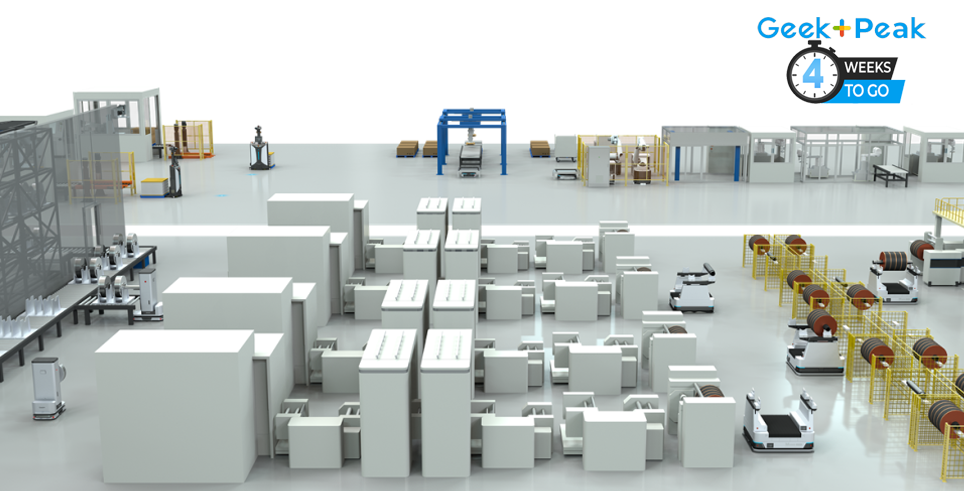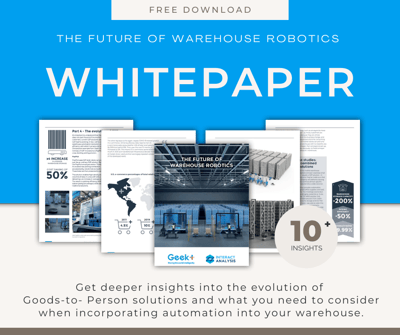Geek+ Reverse Logistics for Apparel: Automation Does It Better
The reverse logistics process: what happens once a customer returns an item wether because of a defect or because they simply don't want it. Reverse logistics is a type of supply chain management that moves goods from customers back to the sellers or manufacturers.
The effect this has on your company's bottom line can be substantial: according to one study, reverse logistics costs retailers $5 billion every year.
Many companies don't have the right systems in place to handle such a large volume of returns and other recyclables—and their customers suffer as a result. When you use a reverse logistics provider, however, you can ensure that your products are returned quickly and safely while maximizing their value through recycling programs.
Table of Contents:
Geek+ Apparel Returns Solution
-
Current situation and pain points of returns scenario
Status quo: Shoes and apparel products have strong seasonality, short sales cycles, and many SKUs each season. There are a large number of returned products in daily sales, after big promotions, and seasonal changes. When the return rate is high, it can reach 30%-50%. There are many types of returned SKUs, and the number of returned goods varies. Different SKUs are mixed in the same packaging box, and the quality varies greatly.
 Pain points: Businesses hope that the returned products in season can be quickly sorted and put on the shelves for secondary sales; the returned products from past seasons are can be quickly sorted and stored, and then sold in batches for promotions. These are difficult to achieve in the current manual operation and causes other problems.
Pain points: Businesses hope that the returned products in season can be quickly sorted and put on the shelves for secondary sales; the returned products from past seasons are can be quickly sorted and stored, and then sold in batches for promotions. These are difficult to achieve in the current manual operation and causes other problems.
The traditional manual processing of returns has a long process, many steps, slow efficiency, and many errors, ranging from 1-2 weeks to 1-2 months, which seriously affects the secondary sales of returns.
The slow turnover of returns causes costly storage of goods, occupying precious warehouse operation space for long periods. In order to deal with the slow returns processing, a larger warehouse and more costs will be required.
-
Traditional manual warehouse return solutions and shortcomings
Process:
① Manually count and receive the returned goods →
② Unpack the boxes one by one, and conduct quality inspection one by one →
③ Manually classify the goods one by one according to the quality level and place them separately according to the quality level →
④ Manually distribute all A-level products according to the aisle →
⑤ Manually scan the SKUs in the aisle to check the storage location and put them on the shelf →
⑥ Manually find the storage location in the aisle and consolidate the goods off the shelf as needed
Drawbacks:
(1)How much of your revenue is lost because of the returns process? The returns process is a major issue for retailers. Inbounding, putaway, and outbounding all take time and resources, and re-selling returned goods can be difficult. This can lead to an increase in backlogs that are difficult to unload, which means lost revenue for your business.
(2) A special sorting site is required, and the site occupies a large area. The height utilization of the sorting area is only about 0.7-1.3 meters, and the vertical space is wasted.
(3) Relying on a large amount of labor, the warehouse capacity is not flexible. During peak return periods it is difficult to recruit personnel and expand space.
(4) The capacity bottleneck of traditional solutions is obvious. Manually distributing the goods according to the aisle, scanning and putting them on the shelves one by one in the aisle, the efficiency is very low, and the error rate is high, which is the biggest bottleneck in the entire return processing.
(4) The untimely processing of returns will occupy a large amount of warehouse operation space and storage space and affect the normal operation of the warehouse.
(5) The consolidation and removal of the returned products in the warehouse requires manual processing. The labor demand is large and the efficiency is very low.
-
Traditional automation solutions
Process:
Compared with the traditional manual solution, the basic process remains unchanged, and automatic distribution equipment is mainly used to replace the manual distribution before the shelves. The distribution efficiency has been improved.
Drawbacks:
(1) The overall process steps has not been reduced, and the process is still very long. It only solves the problem of sorting, but does not solve the fundamental pain point.
(2) The price of equipment is very high, basically more than one million.
(3) The number of sorting slots is limited, and the production capacity is difficult to expand.
(4) It is suitable for the distribution of small-sized clothes, but not suitable for the distribution of shoes and large-sized clothes.
-
Geek+ Returns solution
Process:
① Manually count and receive the returned goods →
② Unpack the boxes one by one, and carry out quality inspection one by one →
③ Manually classify the goods one by one according to the quality level and place them separately according to the quality level →
④ Directly putaway using GTP for random shelf storage →
⑤Accept the order, picking and outbounding by GTP →
⑥ Carry out consolidation and take off the shelf as needed by GTP.
Advantages:
(1) The process steps are shortened, and there is no need to divide the goods according to the aisle before putaway. After the product quality inspection and classification, the goods can be directly putaway by GTP automatically, and the returned goods can be quickly turned into saleable inventory. Improve the sales opportunities of goods in the current season, increase sales by about 5%-15%.
(2) The bottleneck in the process is solved, there is no need to divide the goods, and there is no need to manually scan the aisles one by one to find the storage location and put it on the shelf, and the process efficiency is greatly improved. The efficiency of the whole process is increased by about 2 times.
(3) The intelligent consolidation strategy of Geek+'s GTP solution has high efficiency and realizes the rapid removal of the backlog of returned products. Consolidation logic design can be carried out as needed intelligently to increase the volume of a single consolidation and reduce the frequency of consolidation.
Values:
- Grasp the core pain points of customers, solve the secondary sales of seasonally returned products, and the rapid processing needs of seasonally returned products.
- Simplify the return processing process, improve the efficiency of the whole process, reduce the dependence on labor, and make the production capacity more flexible.
- Through the accumulation of daily returns, multiple sorting and consolidation are reduced, and the efficiency and timeliness of tally are improved.
- Increase the turnover rate of goods and reduce the storage and storage costs of returned goods.
Our advantages compared to traditional automation solutions
- Optimize the overall process, instead of replacing a single step in the process, focus on solving the core pain points of customers.
- The process is more streamlined, more efficient, and reduces manual dependence.
- The cost of the solution is better, and the cost performance ratio is higher.
Compared with traditional solutions, what drawbacks are solved
- Overall process refactoring→solved the problem of long process and low efficiency, and solved the core pain points of customers.
- Remove the sorting process → solve the problem of excessive space occupation and low production capacity.
- Remove the manual sorting of goods and put them on the shelves in the aisles → solve the problem of too much dependence on labor and inflexible production capacity.
- Intelligent consolidation strategy → solves the problems of high consolidation frequency, heavy workload and low efficiency in traditional solutions.
Get in Touch with us








.png?width=500&name=With%20Automation)